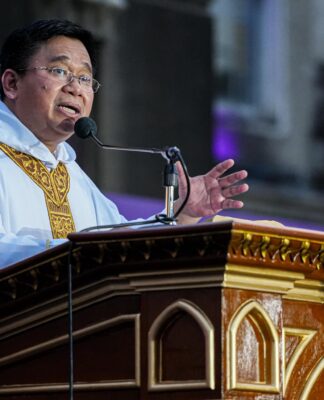FAKE or real?
Consumers can fall for herbal medicines sold in bottles actually containing nothing but dried leaves and roots from unknown plants, said Grecebio Jonathan Alejandro, a resident researcher leading the Thomasian Angiosperm Phylogeny and Barcoding Group of the Research Center for the Natural and Applied Sciences (RCNAS).
Alejandro said he heads a UST team in the scientific project, “DNA Barcoding for Authentication of Philippine Medicinal Plants,” for the Philippine Council for Health Research and Development (PCHRD) under the Department of Science and Technology.
The four-year project, which started in October 2012, seeks to authenticate Philippine medicinal plants by finding unique DNA sequences and genetic characteristics that will serve as a barcode.
Alejandro, who is also the director of the Office for Graduate Research at the UST Graduate School, emphasized the role of a rich biodiversity that allowed Philippines to house a huge number of medicinal plants, leading to the emergence of new species within plant groups reported to have promising medicinal properties.
But this creates a problem in identifying which plants really exhibit medicinal properties since closely related plants tend to have similar characteristics which could result in counterfeiting herbal medicines.
“If plant A has the capability of curing a particular sickness, it does not follow that plant B [belonging to the same genus] also has the same capabilities even though they are closely related species,” Alejandro explained.
“The value of plant A becomes expensive because of its medicinal value but people will also try to sell plant B in place of plant A because morphologically they are the same.”
He said differences between species belonging to the same genus can only be determined from the details of the plants’ microscopic parts, complicating the proper identification of plants because not all people are educated in differentiating them.
“What happens now is that the real plant is being replaced by an adulterant and this is what we are trying to avoid,” Alejandro said.
He stressed that using adulterants could be life-threatening, as there were reported cases in China wherein adulterants were used in producing decoctions of medicinal plants and eventually led to poisoning.
More characters, more basis
DNA barcoding relies on a small fragment of the deoxyribonucleic acid (DNA) which serves as a marker to confirm if one organism really belongs to a particular species.
“The barcoding of medicinal plants will help in the identification because it is based on molecular characters,” Alejandro said.
Molecular characters obtained from the DNA sequences of plants will provide a wealth of information which can serve as basis for comparison to properly identify the plants.
The scientist reiterated that this technique is more modern and more reliable as compared to identification based on morphological features alone, where characters being evaluated are limited.
Alejandro added that barcoding can also help in monitoring the medicinal plants, as well as for their proper protection.
“You can also see the lineage [of a plant] because you already have the molecular sequences which provide good data on plant biodiversity and conservation,” he said.
“If you [already] know the plants with medicinal values, you will also know which plants should be conserved.”
‘Tuklas lunas’
Alejandro’s project will help in PCHRD’s “Tuklas Lunas Drug Development Program” that aims to utilize medicinal plants to come up with new medicines. PCHRD assigned different institutions in the country as Tuklas Lunas Centers which will concentrate on plant research and drug development.
“I proposed [to PCHRD] that it will be good if we barcode the plant samples that they are using for drug discovery,” Alejandro said. “I’m now waiting for them (Tuklas Lunas Centers) to send me samples because the scope of our medicinal plants includes the plants of these centers.”
He said majority of the plants included in the barcoding project were found in the Plant Resources of Southeast Asia (Prosea), a catalogue of medicinal plants in Southeast Asia that they use to determine which plants are present in the Philippines.
“We already collected 230 plant species from Luzon, Visayas, and Mindanao. We also collected plants from as far as Batanes Islands,” Alejandro said.
The goal is to eventually establish an online database to be called Philippine Medicinal Plant DNA Barcoding Database. This free online database will provide the general information of the plant, including its name, family, local distribution, medicinal properties, as well as the DNA barcode that can be used to verify a species’ identity.
Aside from the collecting the target medicinal plants, Alejandro’s group also collect and barcode adulterants for comparison to further ensure quality control in drug development.
Other specimens used by the Phytochemistry Group of RCNAS for the discovery of medicinal compounds found in endemic plants are also included in the barcoding.
The project is now on its second year and Alejandro’s team is yet to complete their checklist. G.R.Z. Paas













